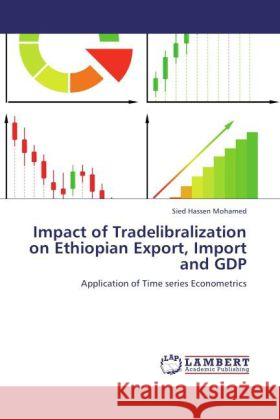Impact of Tradelibralization on Ethiopian Export, Import and GDP : Application of Time series Econometrics » książka
Impact of Tradelibralization on Ethiopian Export, Import and GDP : Application of Time series Econometrics
ISBN-13: 9783846529119 / Angielski / Miękka / 2011 / 68 str.
Impact of Tradelibralization on Ethiopian Export, Import and GDP : Application of Time series Econometrics
ISBN-13: 9783846529119 / Angielski / Miękka / 2011 / 68 str.
(netto: 208,74 VAT: 5%)
Najniższa cena z 30 dni: 218,66
ok. 10-14 dni roboczych
Dostawa w 2026 r.
Darmowa dostawa!
Following the 1970 s and 1980 s economic and debt crisis in the developing countries, major aid donors like World Bank and IMF change their aid policies to these countries. They recommend a policy package called Structural Adjustment program (SAP) which included reduction of trade barriers and opening of international trade to foreign competition, and amongst other long-term growth and development strategies. Ethiopia adopts SAP in 1992 as recommend by World Bank. Trade liberalization is one of policies in SAP, which the country adopts with the aim of expanding export, import and GDP of the country. The study has attempted to find out the impact of trade liberalization has brought in to the performance of ,export, import and GDP.The study uses Instrumental Variable (IV) and two stage least square (2SLS) estimation methods to estimate the impact of trade liberalization on the above variables using data from 1960-2006 . The study finds that even though trade liberalization has positive impact on both export and import of the country, its impact is more to import than to exports making the trade deficit of the country worse than before.











